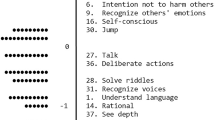Abstract
This article considers what kind of partial agency can be implemented for objects to bring about better agencies for interacting with humans. We humans have the ability to inform our fellows about our intentions, internal states, and requirements through verbal means, gestures, attitudes, timings, and other representations. These representations help us to maintain our belief that we are sufficient agents. Robots and virtual agents also mimic these representations; they act as if they have such an agency. However, their agencies are sometimes too excessive compared to their task. This mismatch leads to a high cognitive load being placed on users and consequently leads to breakdowns in interaction; it prevents human-agent interaction from being a modality in certain applications. We have devised an agency with multiple selectable features. We believe that selectable features promote good designs of virtual agents, robots, machinery, and home appliances according to their intended traits. We categorized these agencies into several groups and discuss what elements lead to these features. The article also describes a method of identifying these features in human behavior.
Similar content being viewed by others
References
Yamada S, Kakusho K, Ono T, et al (2008) Designing space between humans and robots (in Japanese)
Dennett DC (1987) The intentional stance. MIT Press, Cambridge
Tomasello M (1995) Joint attention and social cognition. In: Moore C, Dunham P (eds) Joint attention: its origins and role in development. pp 103–130
Darwin C (1872) The expression of the emotions in man and animals
Ekman P (1999) Handbook of cognition and emotion. Wiley, New York
Levenson RW (1999) The intrapersonal functions of emotion. Cognition Emotion 13:481–504
Picard R (1997) Affective computing, MIT Press, Cambridge
Morris D (1995) Bodytalk: the meaning of human gestures. Crown
Fauconnier G (1995) Mental spaces, MIT Press, Cambridge
Liddell S (1996) Spatial representations in discourse: comparing spoken and signed language. Lingua 98:145–167
Descartes R (1637) Discourse on the method. http://www.gutenberg.org/ebooks/59
Komatsu T, Utsunomiya A, Suzuki K, et al (2005) Experiments toward a mutual adaptive speech interface that adopts the cognitive features humans use for communication and induces and exploits users’ adaptation. Int J Hum Comput Interact 18(3):243–268
Sonoyama T (2007) Introduction for robot design (in Japanese)
Epley N, Waytz A, Cacioppo JT (2007) On seeing human: a three-factor theory of anthropomorphism. Psychol Rev 114(4):864–886
Osawa H, Mukai J, Imai M (2007) Display robot. Interaction between humans and anthropomorphized objects. 16th International Symposium on Robot and Human Interactive Communication, Jeju, Korea, vol 16, pp 451–456
Author information
Authors and Affiliations
Corresponding author
Additional information
This work was presented in part at the 16th International Symposium on Artificial Life and Robotics, Oita, Japan, January 27–29, 2011
About this article
Cite this article
Osawa, H., Yamada, S. Social modification using implementation of partial agency toward objects. Artif Life Robotics 16, 78–81 (2011). https://doi.org/10.1007/s10015-011-0891-2
Received:
Accepted:
Published:
Issue Date:
DOI: https://doi.org/10.1007/s10015-011-0891-2




